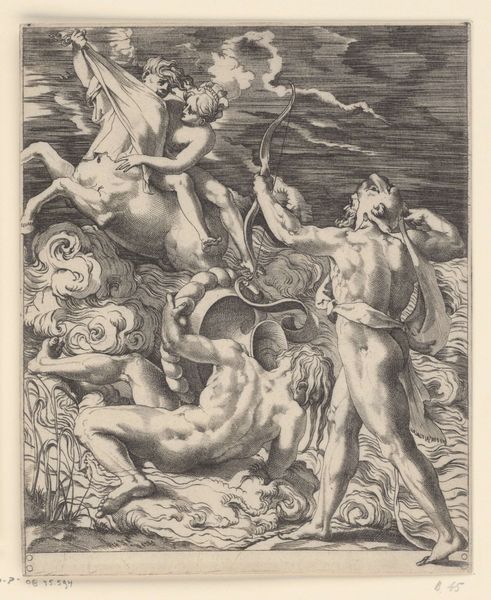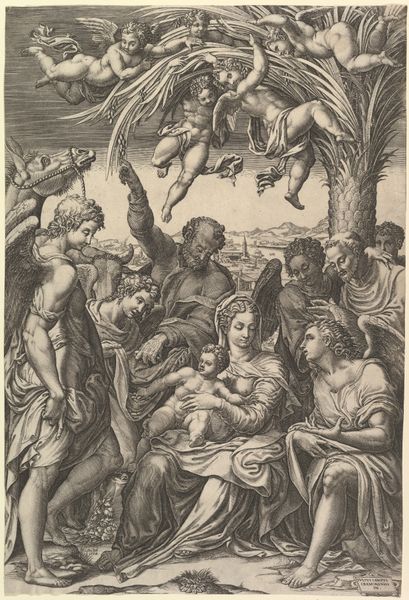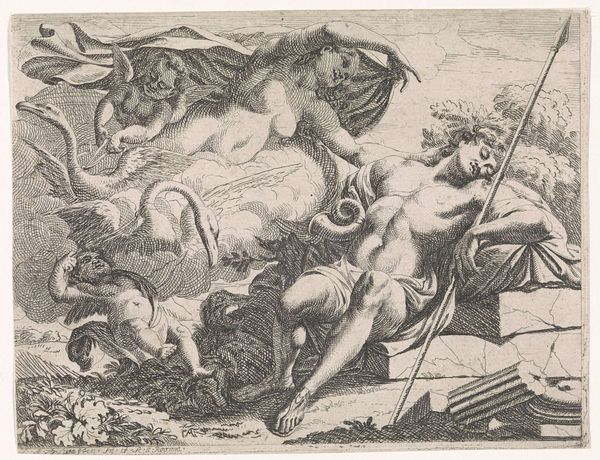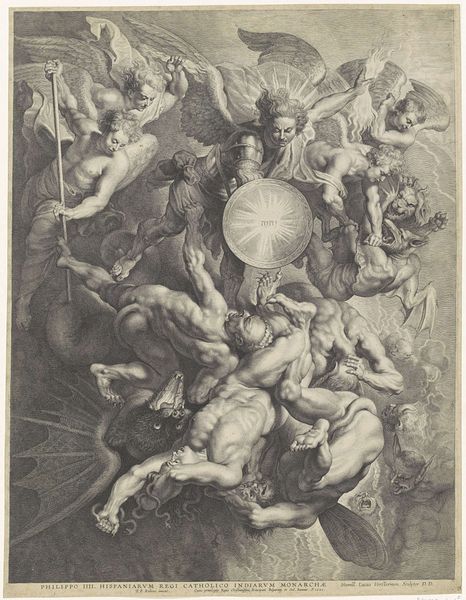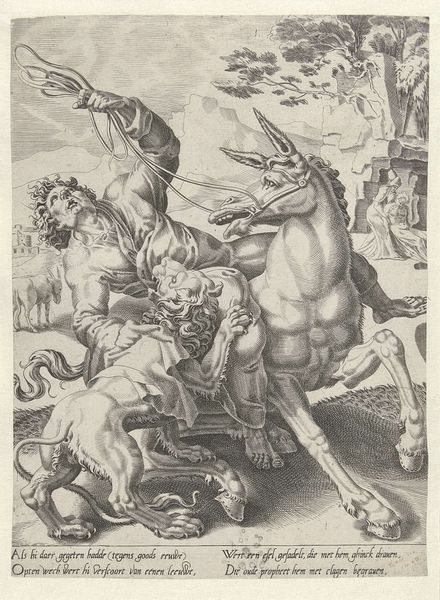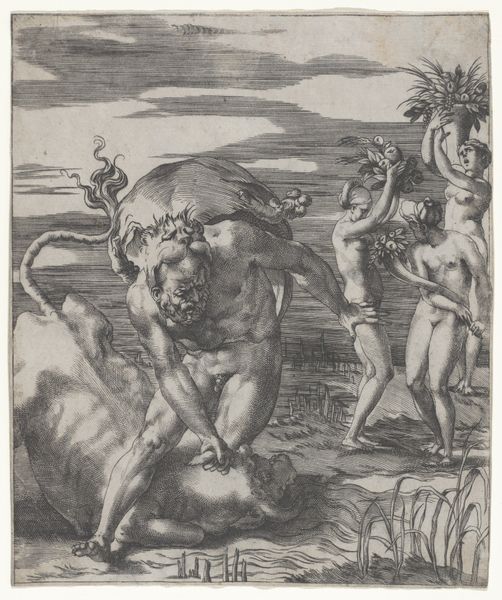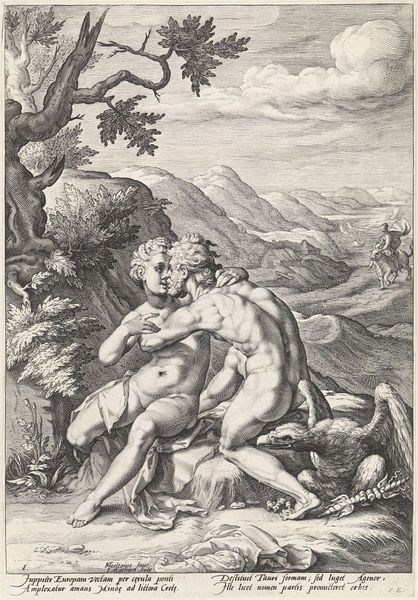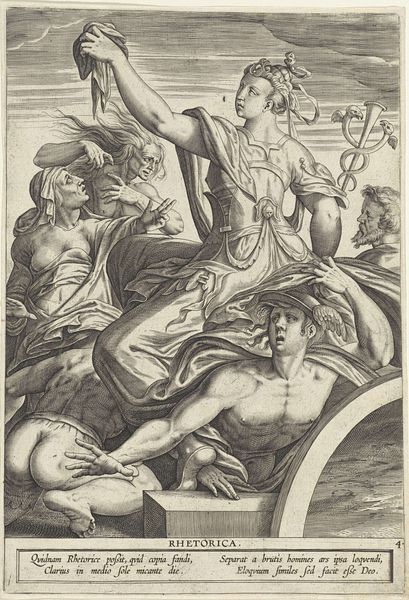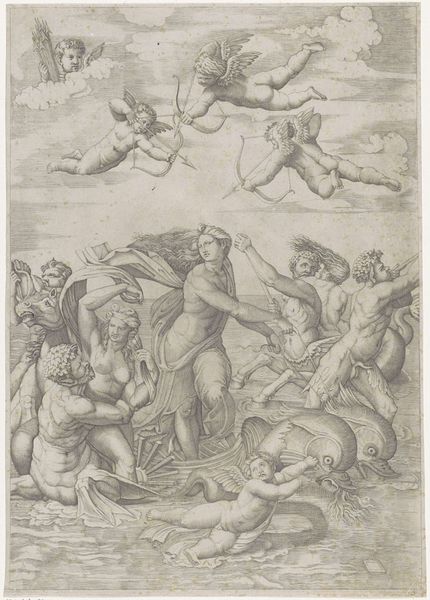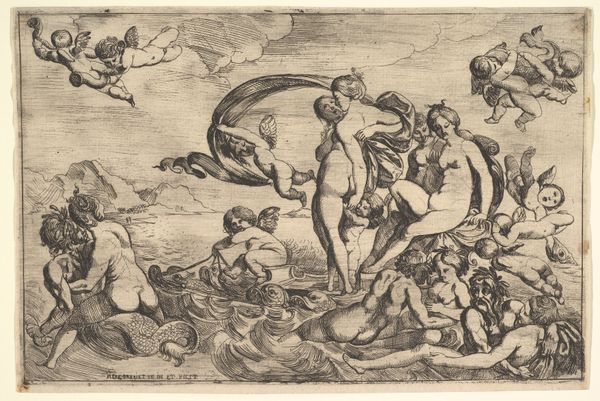
drawing, print, etching, engraving
#
drawing
#
ink drawing
#
narrative-art
# print
#
etching
#
figuration
#
northern-renaissance
#
engraving
Dimensions: 12 1/8 x 8 1/4 in. (30.8 x 20.96 cm) (plate)
Copyright: Public Domain
Editor: So, we're looking at Dürer’s "Abduction on a Unicorn," made in 1516. It's an engraving, and immediately what strikes me is the sheer drama of the scene, with figures wrestling atop this mythical beast. There's a real tension, isn't there? How do you interpret this work considering its historical context? Curator: Well, it’s tempting to frame it as pure fantasy, but the socio-political backdrop of 16th-century Europe is crucial. Dürer, as a prominent artist of the Northern Renaissance, operated within a system of patronage, influenced by the religious and social upheavals of the time. What’s depicted as an “abduction” could reflect contemporary anxieties about social order and morality. Do you see any symbolic elements that reinforce such anxieties? Editor: I hadn't thought about it that way. Now that you mention it, there’s a skull in the lower left corner; a classical *memento mori*, perhaps commenting on impending death? Also, aren’t unicorns commonly linked to purity? The clash of these themes could indicate a questioning of the social mores. Curator: Precisely. Consider too the visual power dynamic; the struggle for dominance is central to the image's composition. Is it about gender roles, or maybe something more general relating to how societal norms could be perceived as "abducting" or distorting one’s individual desires? How do you perceive Dürer's opinion on all this, judging by his arrangement of figures? Editor: Hmmm, it's difficult to discern his precise stance, given the multiple readings at play. But I get the impression it is at the very least a skeptical image, asking viewers to probe these uncertainties for themselves rather than pushing a singular opinion. Curator: Exactly. Art like this challenged its audience. What may appear as a dramatic depiction of myth really engaged pressing socio-political topics. We must be wary to reduce it into mere "fantasy" given the context. Editor: Fascinating! Thinking about art in such specific contexts really highlights what a crucial social function the medium had in shaping public perception and values. Curator: And indeed, it still does, so we ought not to limit our interpretations.
Comments
minneapolisinstituteofart almost 2 years ago
⋮
Albrecht Dürer may have put a twist on the Abduction of Proserpina story. Usually Pluto (the abductor) is shown on foot or driving a chariot. But here he rides a unicorn. And this unicorn—neither a snorting, fiery steed nor a symbol of purity—seems like the horse version of a leering pervert. Pluto’s detached expression sets an odd mood, and as for the woman, she is remarkably ill formed.
Join the conversation
Join millions of artists and users on Artera today and experience the ultimate creative platform.
